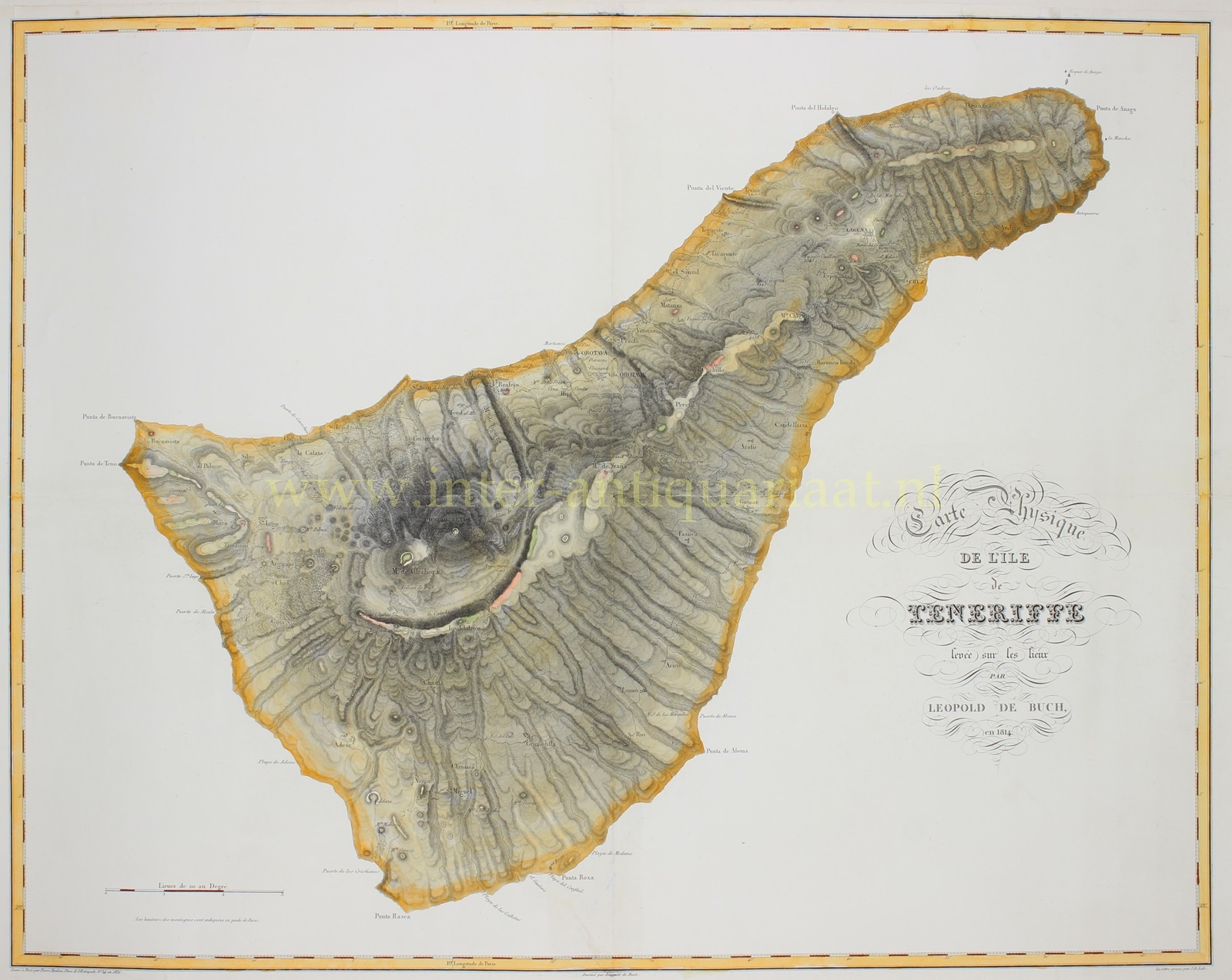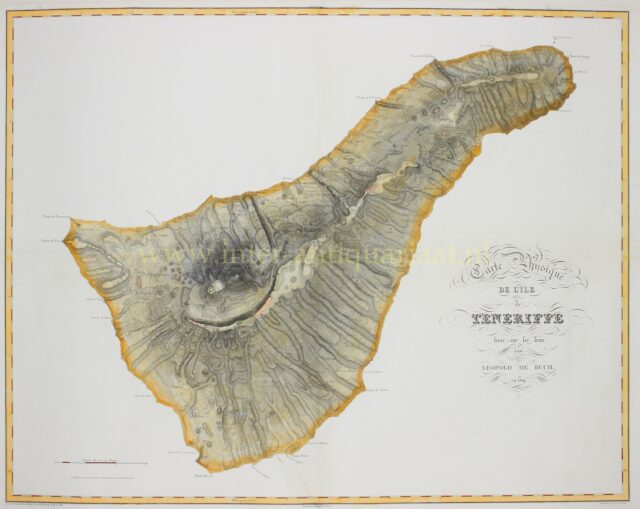Tenerife – Pierre Tardieu naar Leopold von Buch, 1831
”Carte Physique de I´Ile de Teneriffe,” copper engraving made by Pierre Tardieu in 1831 after the surveying work of Leopold…
Lees verder€1.850
”Carte Physique de I´Ile de Teneriffe,” copper engraving made by Pierre Tardieu in 1831 after the surveying work of Leopold von Buch of 1815. Coloured by a later hand. Size: 60 x 77 cm.
Tenerife, like the rest of the Canary Islands, was under Spanish control. The islands were significant as a strategic stopover point for Spanish ships heading to the Americas. However, the early 19th century was a period of decline for Tenerife’s economy. The island’s prosperity had been heavily dependent on trade, particularly wine exports to Britain and the Americas. By 1815, the Napoleonic Wars (1803-1815) had disrupted European trade routes and markets, leading to economic difficulties. The wars, combined with the independence movements in Spanish America, further strained Tenerife’s economy.
Christian Leopold Freiherr von Buch (1774 -1853) was a German geologist and paleontologist who is remembered as one of the most important contributors to geology in the first half of the nineteenth century. His scientific interest was devoted to a broad spectrum of geological topics: volcanism, fossils, stratigraphy and more.
His visit to Tenerife in 1815 was part of a broader scientific mission to understand the island’s volcanic nature, particularly the Teide volcano. Von Buch’s observations and mappings were groundbreaking, contributing significantly to the understanding of volcanic activity and the geology of the Canary Islands. His work culminated in the publication of the large format shown here, which detailed the physical and geological features of Tenerife.
His geological excursions, even in countries which he had repeatedly visited before, continued without interruption until a very advanced age: eight months before his death he visited the mountains of Auvergne, and on returning home he read a paper on the Jurassic formation before the Academy of Berlin. Alexander von Humboldt, who had known him intimately for a period of more than 60 years, called him the greatest geologist of that period. Von Buch was unmarried and lived aloof from the world, entirely devoted to scientific pursuits. His excursions were always taken on foot, with a staff in his hand, and the large pockets of his overcoat filled with papers and geological instruments.
Price: 1.850,-


